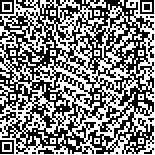程华军,廖亮华,陈尚杰,焦睿,王单,高文芳,黄石钊.肉毒毒素注射后功能性电刺激与运动平板同步治疗脑卒中后足下垂及足内翻的疗效观察[J].中华物理医学与康复杂志,2016,38(9):674-678
扫码阅读全文

|
| 肉毒毒素注射后功能性电刺激与运动平板同步治疗脑卒中后足下垂及足内翻的疗效观察 |
|
| |
| DOI: |
| 中文关键词: 脑卒中 A型肉毒毒素 表面肌电信号 功能性电刺激 运动平板 |
| 英文关键词: Stroke Botulinum toxin type A Surface electromyography Functional electrical stimulation Exercise Treadmill training |
| 基金项目:2015年深圳市科技计划项目(JCYJ20150402152005637) |
|
| 摘要点击次数: 5350 |
| 全文下载次数: 6975 |
| 中文摘要: |
| 目的观察A型肉毒毒素(BTX-A)注射后功能性电刺激同步减重平板治疗对脑卒中患者足下垂及足内翻的影响。 方法采用随机数字表法将67例脑卒中后出现足下垂及内翻的患者分为联合治疗组(22例)、电刺激组(23例)及常规治疗组(22例)。3组患者均在B超及电刺激引导下进行BTX-A注射治疗,24h后常规治疗组患者给予常规干预(包括使用脑保护剂及进行肢体功能锻炼、步态训练、平衡训练、日常生活活动能力训练等),联合治疗组在常规治疗基础上辅以功能性电刺激与减重平板同步治疗,电刺激组则在常规治疗基础上辅以功能性电刺激。于治疗前、治疗6周后对各组患者进行疗效评定,具体疗效评定指标包括胫骨前肌与腓肠肌外侧头积分肌电值(iEMG)、踝背伸协同收缩率(CR)、改良Ashworth量表(MAS)评分、Berg平衡量表(BBS)评分、功能性步行分级(FAC)、踝背伸与外翻活动度(ROM)等。 结果治疗后3组患者胫骨前肌iEMG、腓肠肌外侧头iEMG、踝背伸CR、MAS评分、BBS评分、FAC评分、踝背伸与外翻ROM均较治疗前明显改善(P<0.05);通过组间比较发现,治疗后3组患者腓肠肌外侧头iEMG组间差异无统计学意义(P>0.05);联合治疗组胫骨前肌iEMG[(1.54±0.23)mV]、踝背伸CR[(13.32±8.47)%]、MAS评分[(0.29±0.35)分]、BBS评分[(42.37±4.28)分]、FAC评分[(4.26±1.14)分]、踝背伸ROM[(15.58±1.32)°]与外翻ROM[(14.33±1.41)°]均显著优于电刺激组及常规治疗组水平(P<0.05)。 结论于BTX-A注射后同步进行功能性电刺激及减重平板训练,能进一步改善脑卒中患者足下垂及足内翻畸形,促其步行功能改善,该联合疗法值得临床推广、应用。 |
| 英文摘要: |
| Objective To explore the effect of functional electrical stimulation combined with treadmill training and botulinum toxin type A injection on foot-drop and strephenopodia among stroke survivors. MethodsSixty-seven stroke survivors with foot-drop and strephenopodia were randomly divided into an electrical stimulation group (n=23), a conventional treatment group (n=22) and a combined treatment group (n=22). All 3 groups received a 400 U injection of BTX-A and electrical stimulation. After 24 hours, the patients in the conventional treatment group received conventional treatment including a brain protection agent, limb function exercises, gait training, balance training and training in the activities of daily living. The patients in the combined treatment group received that conventional treatment, plus functional electrical stimulation and weight loss training on a treadmill. The patients in the electrical stimulation group received functional electrical stimulation treatment supplementing the conventional treatment. Therapeutic effects were evaluated before and after six weeks of treatment using integral electromyography (iEMS) of the anterior tibial muscle and the lateral head of the gastrocnemius muscle, the co-contraction ratio (CR) during ankle dorsiflexion, the modified Ashworth Scale (MAS), the Berg balance scale (BBS), a functional walking score (FAC), and the active range of motion (AROM) of the ankle in dorsiflexion and eversion. ResultsAfter the treatment, significant improvement was observed in all three groups in the average iEMS value of the anterior tibial muscle and the lateral head of the gastrocnemius muscle, the CR in ankle dorsiflexion, and in their MAS, BBS, FAC and AROM results. There was no significant difference among the three groups after treatment in their average iEMS values at the lateral head of the gastrocnemius. The average values of the other indicators were, however, significantly better in the combined treatment group than in the other 2 groups. ConclusionFunctional electrical stimulation combined with treadmill training and botulinum toxin type A injection can significantly improve foot-drop, strephenopodia and the walking function of stroke survivors. This combined treatment deserves popularization and application in clinical practice. |
|
查看全文
查看/发表评论 下载PDF阅读器 |
| 关闭 |
|
|
|